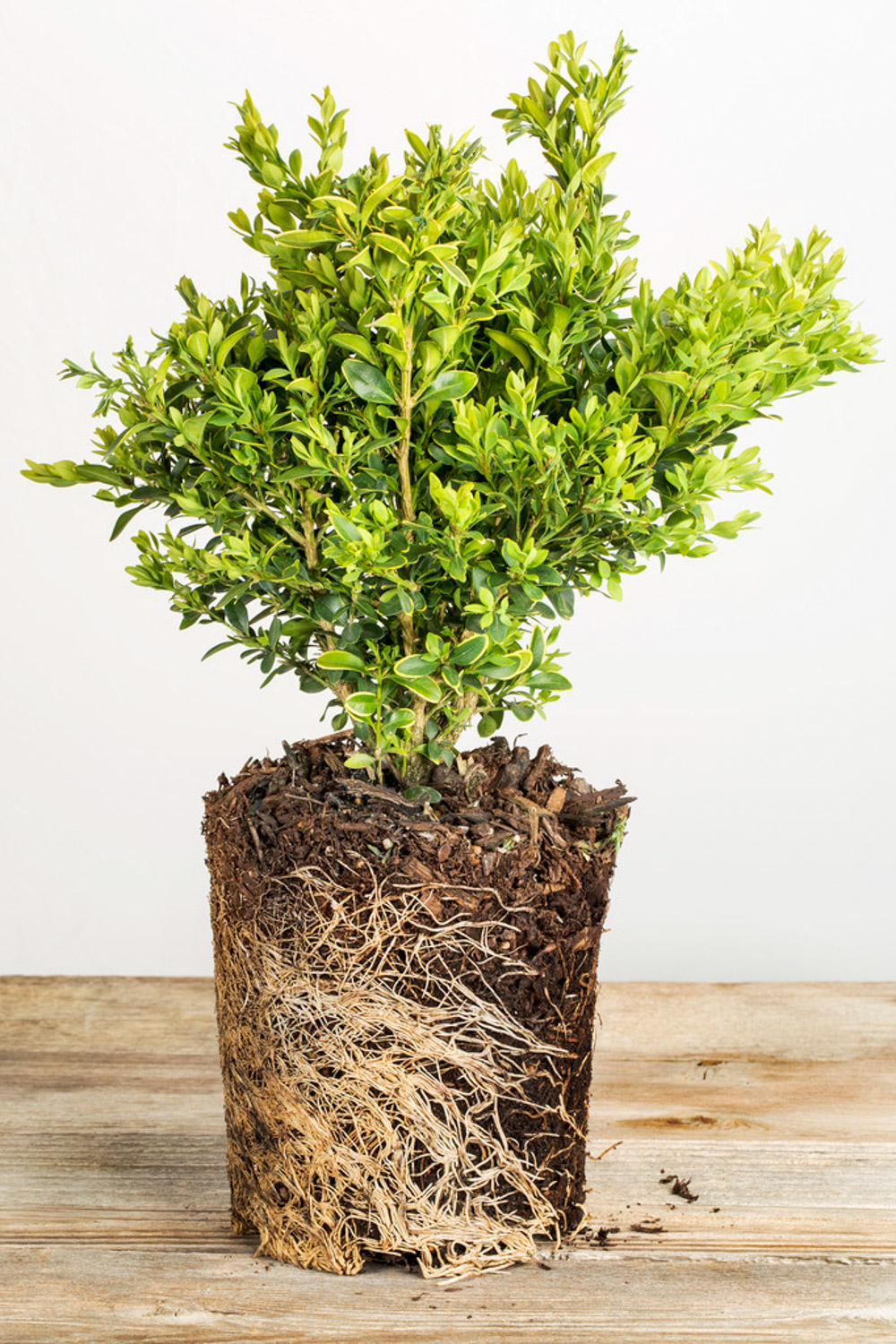Sowing and propagation of boxwood
Seedbed
At the beginning of September, loose and fertile sandy soil with good drainage is selected as the seedbed, and the base fertilizer (organic fertilizer) is applied. At the same time, insecticidal and bactericidal agents are mixed. The soil is turned over and leveled to make the seedbed
Seeding rate
50-60g per square meter, first mix the seeds with an appropriate amount of sand, then sprinkle them evenly on the seedbed, and then cover it with 1-1.5mm fine soil and cover it with grass curtain to moisturize
Post broadcast management
The sown seeds only grow radicle but do not germinate in that year. In order to prevent freezing injury, 5-8 cm of soil needs to be covered on the grass curtain before the soil is frozen in mid and late November. In the middle and late March of the next year, remove the straw curtain and covering soil, and then build a plastic arch shed on the seedbed. The temperature needs to be controlled between 25-30 ℃. After about 20 days, the germ will grow to the excavated surface. After that, the temperature in the shed should be ensured to be between 20-25 ℃. At the same time, it needs proper watering. When the temperature is stable in late April, the plastic arch shed can be removed. In the seedling stage, it is necessary to pull grass and loosen the soil, timely irrigate and topdressing, and timely prevent and control diseases and pests

Cutting propagation of boxwood
Seedbed
Select plots with high terrain, deep soil layer, loose soil and good drainage and irrigation. After the grass roots and stones are removed, the soil is integrated into a high border of about 1-1.2 meters, and then 5% mancozeb 1500 times and 10% imidacloprid 1000 times are used to eliminate underground pests and harmful bacteria. After leveling, the seedbed is patted with a shovel, pouring 10% rotten manure and then spreading a yellow soil or a sifted coke lime on the bed surface. The thickness is about 5 cm. p>
Cuttings
Cutting propagation can be carried out at any time, but it is better to choose the tender branches growing in that year as cuttings in summer. The cuttings shall be selected from the excellent branches that are lignified or semi lignified in the current year. After collection, the cuttings should be cut in a cool and leeward place. When cutting, if twigs have grown in the internodes, cut them off at 0.5cm above and below the node, and then cut the stem node into two halves according to the location of the twigs, and divide them into two branches for cutting. If the twigs do not grow twigs, two sections need to be left. The upper end is cut into a flat section at 1cm above the bud, and the lower end is cut into a horse ear shape or flat section at 0.5cm away from the bud
Cutting
It should not be too deep. The depth of large branches is 1 cm when the next stem node is inserted into the soil. When branching cutting, the flat section is downward. The depth should be 1 cm when the mother plant enters the soil. The cuttings are inclined to the ground at about 45 degrees. Shallow oblique cutting is beneficial to the rooting and survival of cuttings in advance. After cutting, the soil around the cuttings needs to be compacted and then watered once to make the lower part of the cuttings and the soil compact. The row spacing of cutting is generally 12-15 cm and the plant spacing is 6-8 cm. When cutting, don't leave too many leaves on the cuttings, but don't cut them all. The lower leaves can be cut off with the petiole, and the upper leaves can be left with 2 leaves. Then cut each leaf by 1 / 2 to 2 / 3 according to the size of the leaves, so as to reduce the excessive consumption of water and nutrients
Manage
After cutting, shed should be set up for shade to reduce transpiration and avoid direct sunlight on the seedbed. When cutting in early spring or late autumn, it is also necessary to cover the film, which can prevent winter damage. After cutting, you should also pay attention to frequent watering, so as to keep the soil of the seedbed moist, and it is appropriate that the soil on the surface of the seedbed is not white. Topdressing combined with watering can be used, or potassium dihydrogen phosphate plus urea can be used for foliar spraying. Weeding shall be carried out carefully, and ear cutting shall not be collided< span>

 how many times do yo...
how many times do yo... how many planted tre...
how many planted tre... how many pine trees ...
how many pine trees ... how many pecan trees...
how many pecan trees... how many plants comp...
how many plants comp... how many plants can ...
how many plants can ... how many plants and ...
how many plants and ... how many pepper plan...
how many pepper plan...





























